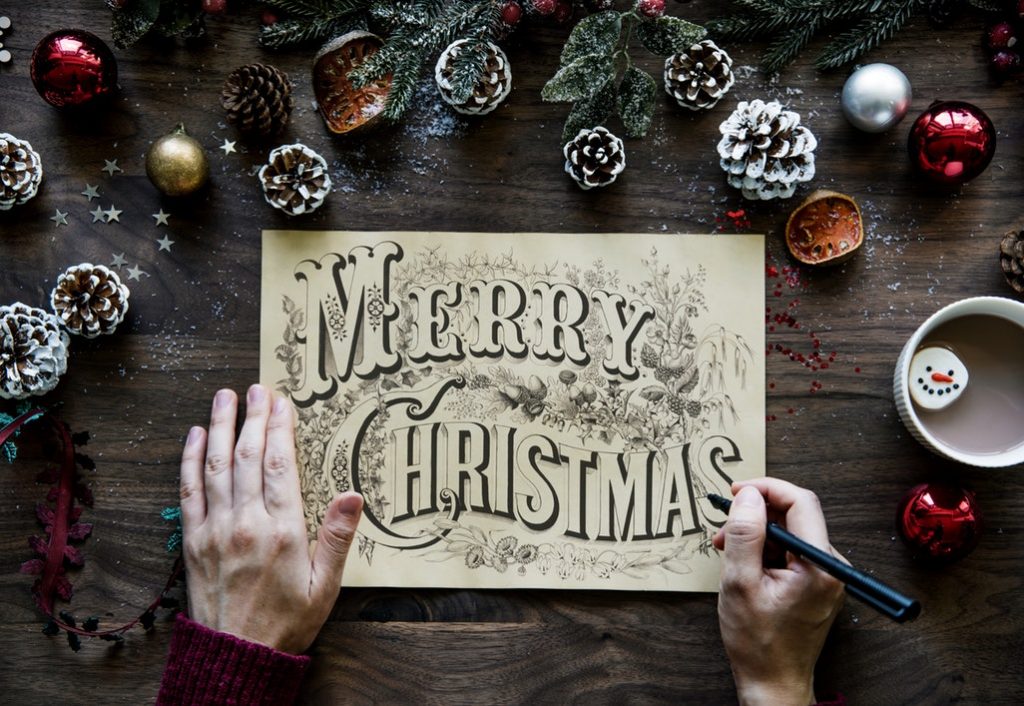Christmas Traditions Around the World – Part 2

Christmas and the time leading up to it is a period full of all kinds of festivities. Although it was originally a religious holiday, many secular customs all over the world have shaped the way that Christmas is celebrated today. The roots may be the same, yet every country has developed their own special traditions. Read on for a glimpse of how other countries celebrate that most beloved time of the year!
GERMANY and AUSTRIA: FROHE WEIHNACHTEN!
In German-speaking countries, the Vorweihnachtszeit (pre-Christmas period) begins four weeks before Christmas: On the first Sunday of Advent, the first candle on the Adventskranz is lit, a wreath made of decorated fir branches. Every subsequent Sunday, one more candle is lit, until all four candles are burning – just in time for Christmas Eve.

Self-made advent calendar with presents
Advent calendars with 24 little doors are very popular (not just among children) and help to increase the anticipation leading up to Christmas! Starting on December 1, every day one door is opened and behind it, you find all sorts of things – most typically chocolate.
On the eve of December 6, children put their (polished) boots outside, awaiting the Nikolaus, who will come in the night and fill them with Christmas sweets, fruits and nuts or even small presents – if they were good children, that is!
The typical Christmas markets also open a month before Christmas and become a feature of almost any city, town or village. Most markets have a nativity scene and many different stalls, food specialties (including Christmas cookies), Glühwein (mulled wine), seasonal entertainment – and they are a great place to shop for Christmas presents.
The Vorweihnachtszeit is a very cosy time spent with family and friends, baking (and eating) Plätzchen (Christmas cookies), Lebkuchen and Christmas Stollen (a traditional cake-like fruit bread), singing carols and reading Christmas stories.
It would not be Christmas without a festively decorated Christmas tree (an evergreen conifer, usually a fir or spruce)! This tradition goes back to early modern times and only spread beyond the German-speaking countries during the second half of the 19th century.
On Heiligabend (Christmas Eve), many people go to church to see a nativity play and sing carols. Depending on the region, either Christkind (Christ child) or Weihnachtsmann (Santa Claus) brings the presents. A bell tells the children when it is time for the Bescherung, the distribution of presents. The lit candles on the tree and Advent wreath create a very special atmosphere. Dinner is usually simple on Christmas Eve – the traditional and rather more opulent Christmas meals are served on the first and second Christmas Day (Dec. 25-26). Typical dishes include goose, lamb, fondue, raclette and chicken.
ITALY: BUON NATALE!
In Italy, the Christmas season begins on December 8, the Day of the Immaculate Conception. Decorations (including Christmas trees in main piazzas) go up on this day and some Christmas markets start. The most important Christmas decoration is the presepe – the Nativity scene or crèche. A crèche is displayed in many churches and piazzas, and in Italian homes. In many parts of the country, the crafting of these ornate works of art by hand remains an artisan tradition.
The eight days before Christmas – the Novena – are filled with carolers and musicians with their instruments going around the neighbourhood singing traditional songs and reciting Christmas verses. In some regions, people dress up as shepherds in honour of the zampognari, or bagpipers, and play merry folklore carols.
La famiglia is at the heart of the Christmas celebrations. Rather than writing letters to Santa, children write letters to their parents, telling them how much they love them, wishing them a merry Christmas and promising to be good. The parents ceremoniously read them out at Christmas Eve dinner, then they toss them in the fireplace. The children chant to La Befana, the mythical Christmas witch, as their wishes go up the chimney.
Although Babbo Natale (Father Christmas), Gesù Bambino (Christ child) and giving presents on Christmas Day have become more common, the main day of gift giving is the Epiphany, January 6, the twelfth day of Christmas. Presents are brought by La Befana, a good witch, who in the night flies in on her broomstick to fill children’s stockings with candy and gifts if they were good, and coal if they were bad. In return, Italian families leave her a glass of vino rosso and some morsels of food.
On Christmas Eve, Italians do not eat meat (the idea is to eat lean in order to prepare their bodies for Christmas Day). However, most indulge on multiple courses of fish – sometimes as many as seven! Afterwards, they attend midnight mass and a living nativity scene.
On Christmas Day, Italians invite their family and friends for a lavish feast of traditional dishes, roasts and desserts, including biscotti, panforte, pandoro and panettone (recipe for panettone).
What is your favourite Christmas tradition? Let us know in the comments!
Also read Christmas Traditions Around the World – Part 1 and Part 3.





